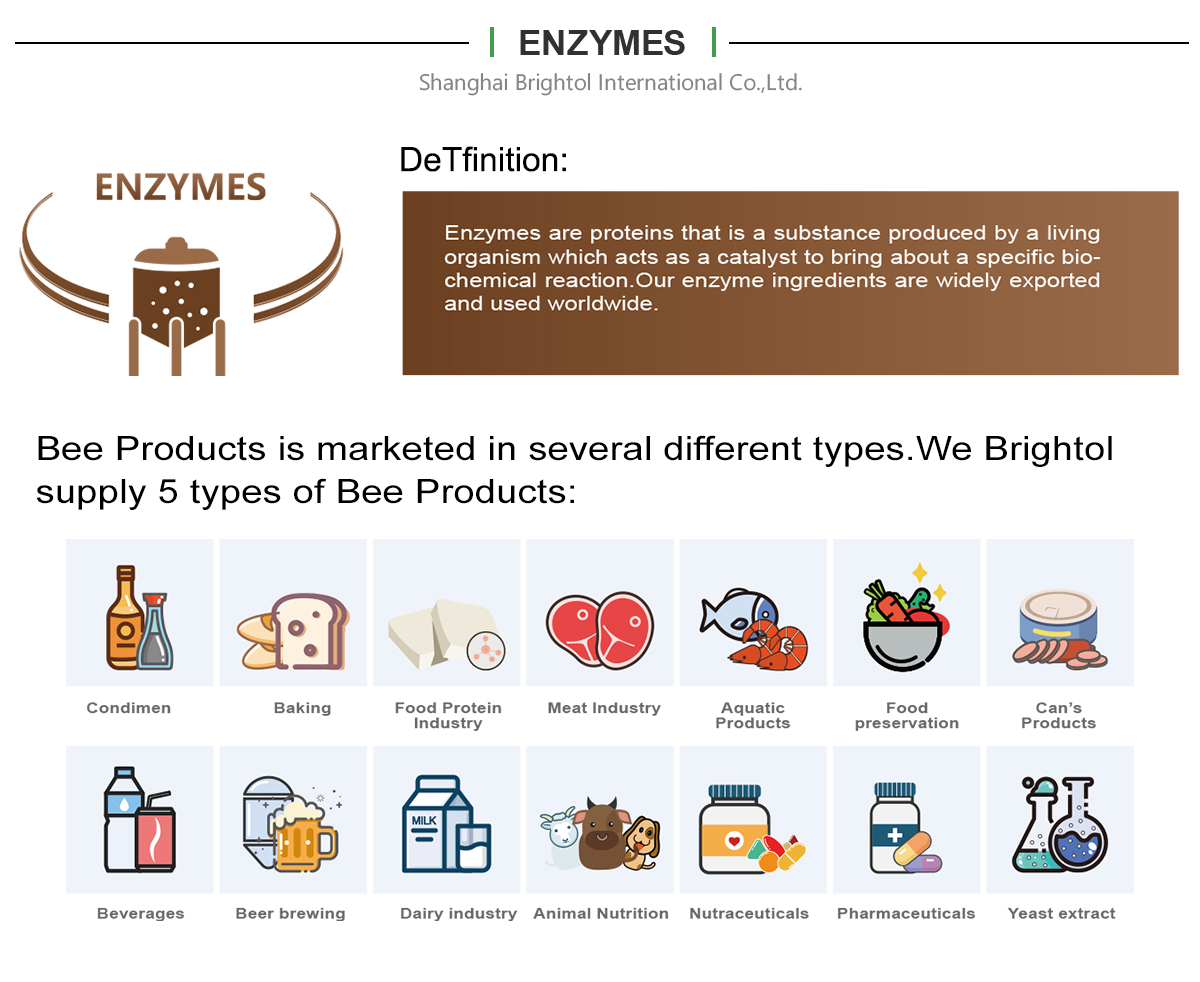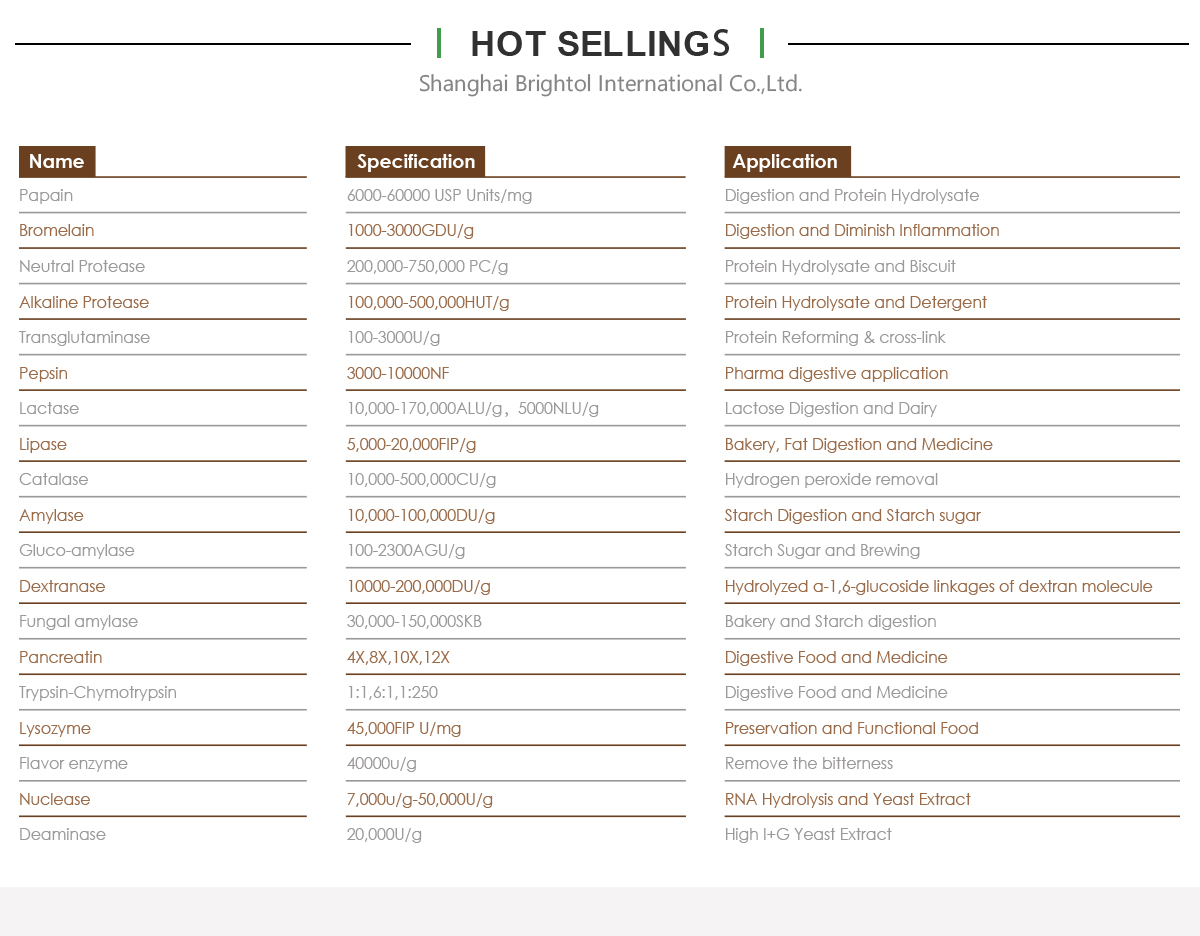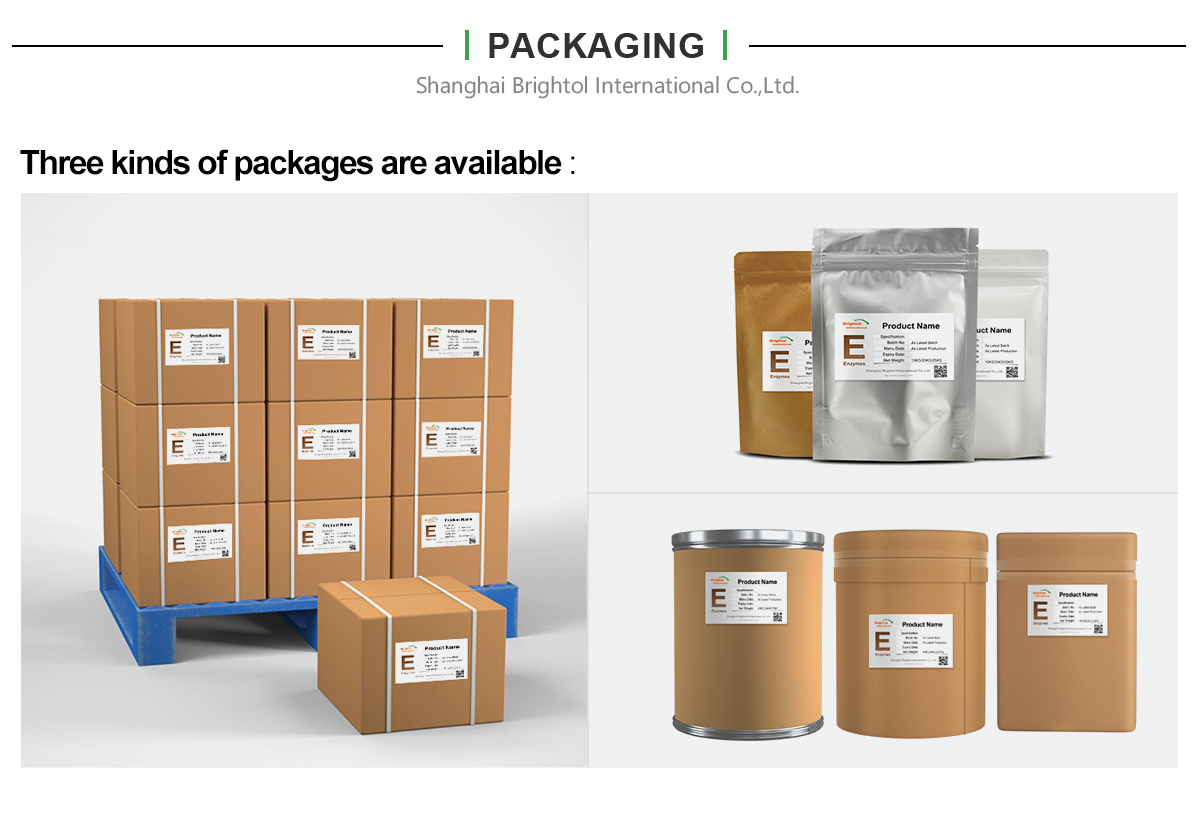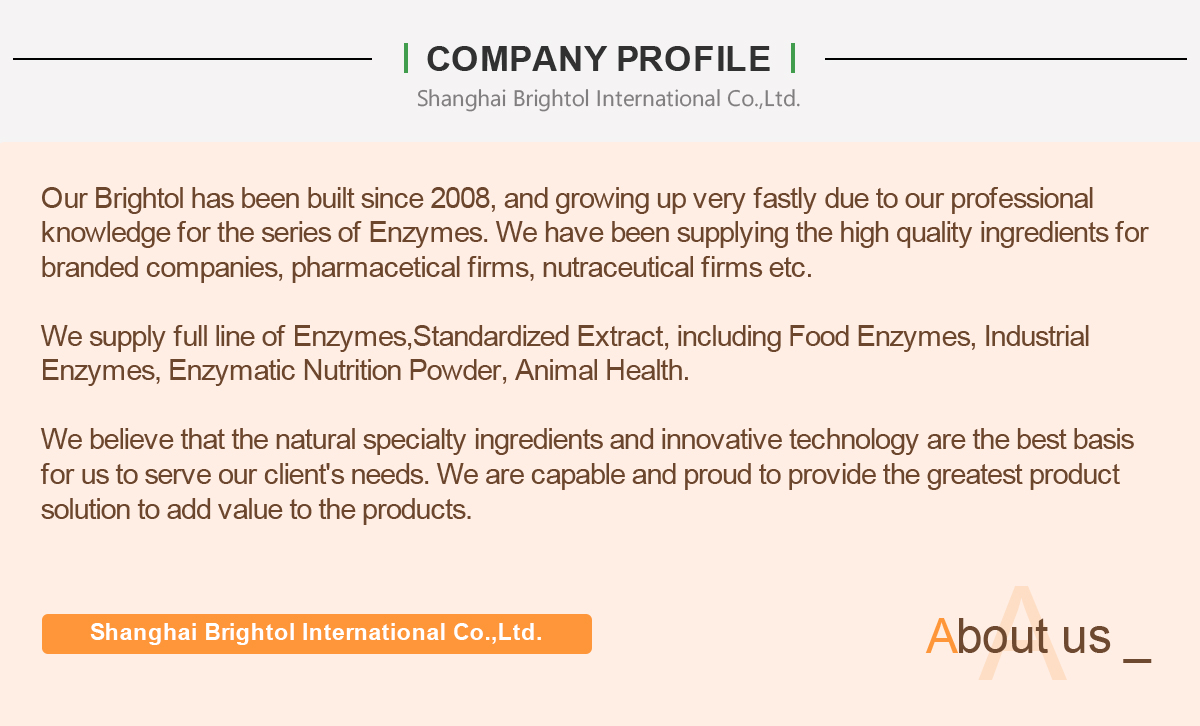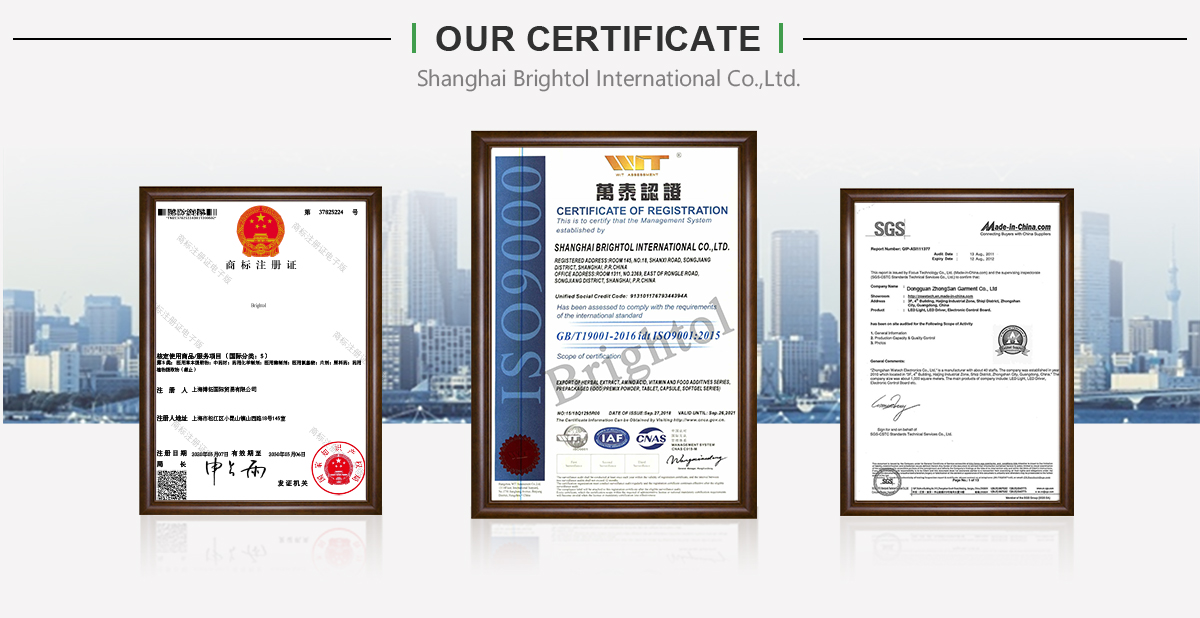

Product Name: Glucose Oxidase
Synonyms: Alfamalt Gloxyl 4080; Bakezyme G01500; beta-D-Glucose oxidase; beta-D-Glucose:quinone oxidoreductase
CAS No.: 9001-37-0
EINECS: 232-601-0
Description:
Glucose oxidase, also called notatin, is one of the many useful enzymes that nature has given us, and is produced by fungi, bacteria, and insects. Commonly found in bee pollen and honey, glucose oxidase plays a key role in digestive processes, overall human health, physical rejuvenation, and anti-aging.
Glucose oxidase catalyzes a reaction in which glucose sugar is broken down into hydrogen peroxide and gluconolactone. This reaction simultaneously consumes the glucose and exhibits significant activity against harmful organisms due to the production of hydrogen peroxide.
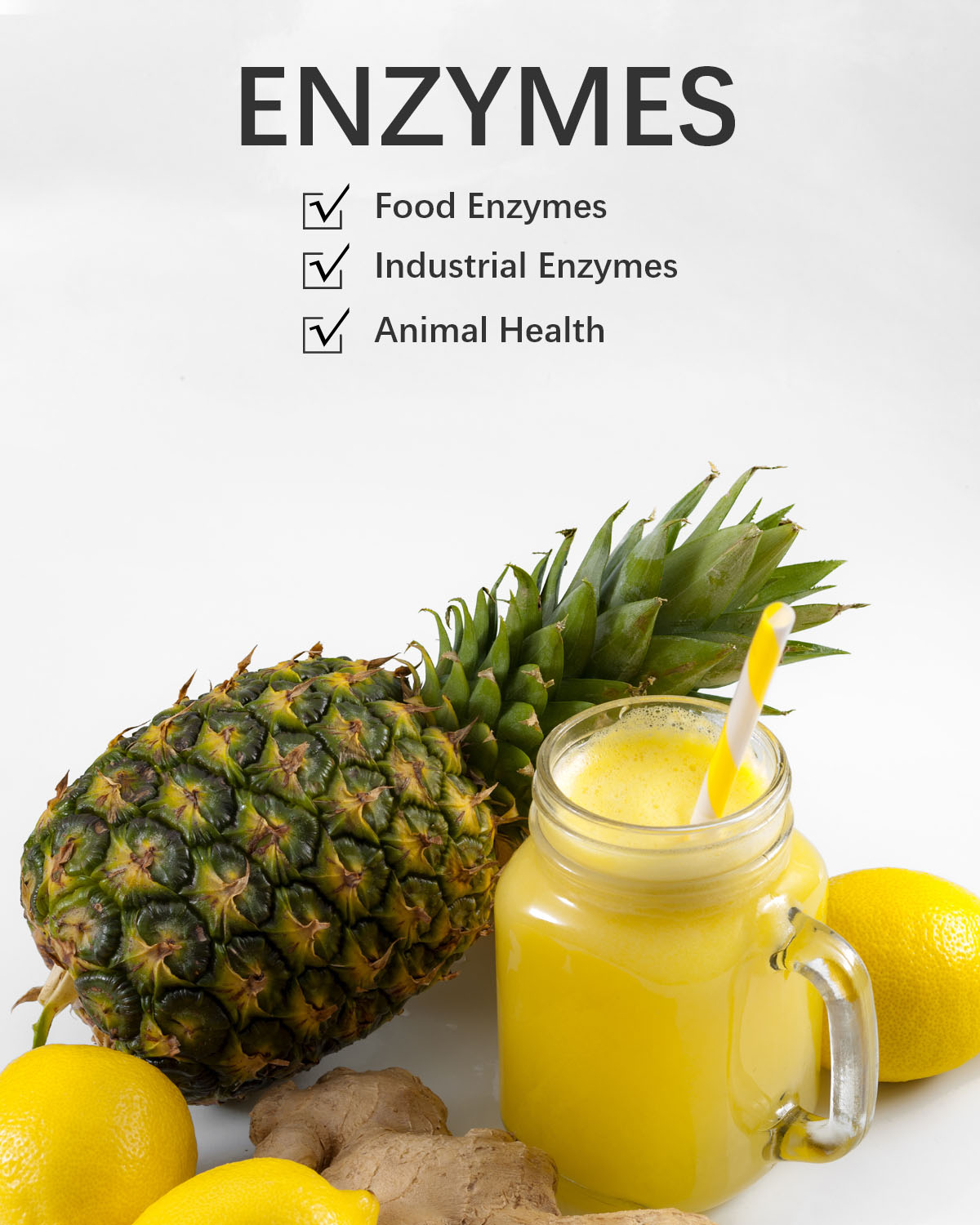

Product Name: Glucose Oxidase
Synonyms: Alfamalt Gloxyl 4080; Bakezyme G01500; beta-D-Glucose oxidase; beta-D-Glucose:quinone oxidoreductase
CAS No.: 9001-37-0
EINECS: 232-601-0
Description:
Glucose oxidase, also called notatin, is one of the many useful enzymes that nature has given us, and is produced by fungi, bacteria, and insects. Commonly found in bee pollen and honey, glucose oxidase plays a key role in digestive processes, overall human health, physical rejuvenation, and anti-aging.
Glucose oxidase catalyzes a reaction in which glucose sugar is broken down into hydrogen peroxide and gluconolactone. This reaction simultaneously consumes the glucose and exhibits significant activity against harmful organisms due to the production of hydrogen peroxide.
Health Benefits
Glucose oxidase offers multiple health benefits including digestive support, blood sugar normalization, and more.
1. Probiotic Support
Due to its oxidation properties, glucose oxidase offers an alternative to chemical additives to increase survival of probiotic flora in yogurt.
2. Acts as a Biosensor for Diabetics
This once obscure enzyme is now being used in blood glucose monitoring devices used at home for diabetes management. This enzyme can help the device keep track of blood sugar levels via bio-sensor technology
3. Resists Harmful Organisms
The hydrogen peroxide formed when the enzyme hydrolyzes glucose sugar deters many organisms. Notatin resists bacteria in the presence of glucose and oxygen. Other studies have found that glucose oxidase repels fungi, such as Candida. These properties contribute to the use of glucose oxidase in food preservation, as it fights harmful organism infestations and spoilage due to oxidation.
4. Boosts Immunity
Raw honey has been used for centuries as a remedy for many health conditions. Enzymes found in honey, such as glucose oxidase are shown to help promote seasonal wellness, especially for the respiratory system. Honey’s activity worked even better when mixed with lemon, and it was more effective at fighting harmful organisms than the antibiotics amoxicillin and azithromycin.
5. Stops Proliferating Cells
Early studies show a connection between the glucose oxidase enzyme and chemotherapeutic properties. Cancer cells feed on glucose as their main food source, so, in theory, when glucose oxidase converts glucose to hydrogen peroxide, it not only starves harmful cells of their food but also creates hydrogen peroxide which can attack the bad cells. Hydrogen peroxide therapy is a well-known alternative remedy used in clinics worldwide.
